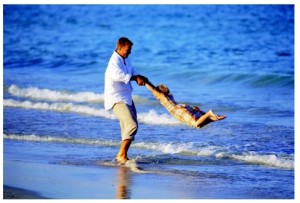Nursemaid elbow is a common injury experienced by children, usually of 1 to 4 years of age. It occurs when any type of physical trauma causes the child’s elbow to slightly move out of its place. The injury commonly occurs when someone forcefully pulls a child’s arm.
Caretakers and parents must be careful while handling children as a nursemaid’s elbow can occur just by picking up a child with his or her hands. The pull causes the radius of the arm to get displaced from beneath the ligament of the elbow.
of the elbow.
Disclaimer: the material posted on this blog on nursemaid’s elbow is for learning purposes only. To learn to recognize and manage elbow injuries enrol in workplace approved first aid training (sign up here).
Signs and symptoms
Common signs and symptoms of nursemaid’s elbow include:
- Elbow pain – pain may worsen with movement, cause unilateral shoulder pain and/or unilateral wrist pain
- Child is unable to move the arm – child may refuse to move or use the arm
- The arm may seem deformed or slightly bent
- The arm may be held against the child’s chest
Treatment
Nursemaid’s elbow may be caused by pulling a child’s arm, lifting a child with his arms, swinging a child by his wrist or hand, falling on an outstretched arm or yanking a child with his arms.
After any of these movements, your child may show signs of elbow pain or nursemaid’s elbow:
- He may cry inconsolably
- He may cry when you touch his arm, wrist, hand or elbow or if anything touches his arm
- He may complain that his hand or elbow hurts
- He may not use his arm or elbow or refuse to do so when you tell him to do something
- There may be swelling around the elbow region
- The elbow may feel tender
If you suspect that your child may be suffering from nursemaid’s elbow, follow these steps immediately:
- Seek immediate medical attention and call your health care provider
- Until help arrives, do not try to fix the injury by trying to put the displaced bone back to its place
- See a doctor even if you notice that the bone moves back to its original place without any external physical force by you or the child
- Your child may be taken to the emergency room for immediate treatment of the injury
At the hospital, your child’s arm and elbow will be diagnosed and examined with X-rays. Physical examination may involve applying a gentle force on the elbow to see if it moves back to its place on its own.

Sometimes, treatment may take several hours or even days. A splint, sling or cast will be applied in the meantime.
Prevention
Your child’s bones, muscles and ligaments are very delicate and are in a developing stage, therefore, avoid making any forceful movements with any of the child’s limbs. For nursemaid’s elbow, avoid making the following movements:
- Do not pull your child’s arm forcefully, if you are taking him away from somewhere and he refuses to leave, carry him but do not pull his arm
- Avoid swinging your child with his hands or wrists
- Do not lift a child by his hands
